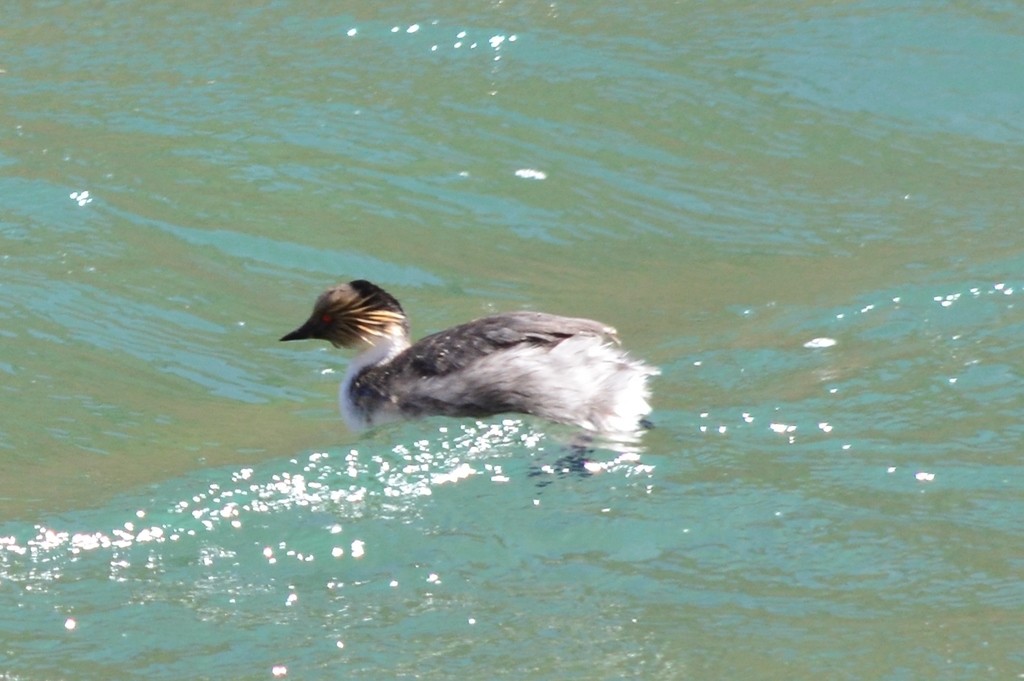Silvery Grebe
A species of Typical Grebes Scientific name : Podiceps occipitalis Genus : Typical Grebes
Silvery Grebe, A species of Typical Grebes
Botanical name: Podiceps occipitalis
Genus: Typical Grebes
Content
Description General Info
 Photo By tinekefr , used under CC-BY-NC-4.0 /Cropped and compressed from original
Photo By tinekefr , used under CC-BY-NC-4.0 /Cropped and compressed from original Description
The silvery grebe is about 28 cm (11 in) in length. There are two different subspecies which differ in the colouring on their head and facial plumes. The southern form has a black cap and the sides of its head are grey. The neck, chest and belly are white while the back is dark grey and the sides and flanks blackish. The beak and feet are black and the eye red. It is similar in appearance to the Junin grebe (Podiceps taczanowskii). 
Size
29 cm
Nest Placement
Floating
Feeding Habits
Silvery Grebe predominantly consumes small arthropods, including insects, their larvae, and crustaceans, occasionally adding fish and plant matter. Silvery Grebe forages by surface pecking and performs shallow, targeted dives lasting around 17 seconds, often in social foraging flocks.
Habitat
Silvery Grebe predominantly resides in freshwater habitats such as lakes, lagoons, reservoirs, and ponds, with preferences for areas that have a combination of shallow water and dense reed beds. Geographically, silvery Grebe favors regions that span from sea level up to high elevation puna zones at 3000-5000 meters. In its habitat, silvery Grebe prefers sites with substantial submerged vegetation, but not overly dense, suitable for nesting. During non-breeding seasons, silvery Grebe may be found in saline lakes and, in certain locales like the Falkland Islands, coastal kelp patches during autumn and winter.
Dite type
Piscivorous
General Info
Feeding Habits
Bird food type
Distribution Area
The silvery grebe nests in Argentina, the Falkland Islands, Chile, and the western parts of Bolivia, Peru, Ecuador and Colombia. It is a migrant in Paraguay and southern Brazil and possibly also in Uruguay. Its habitat is freshwater lakes, lagoons, reservoirs and ponds at altitudes between sea level and 4,000 metres (13,000 ft). In the Andes it is sometimes found foraging on hypersaline lakes and also inhabits saline lakes in Patagonia where it is found in the company of flamingoes. 
Species Status
Not globally threatened.